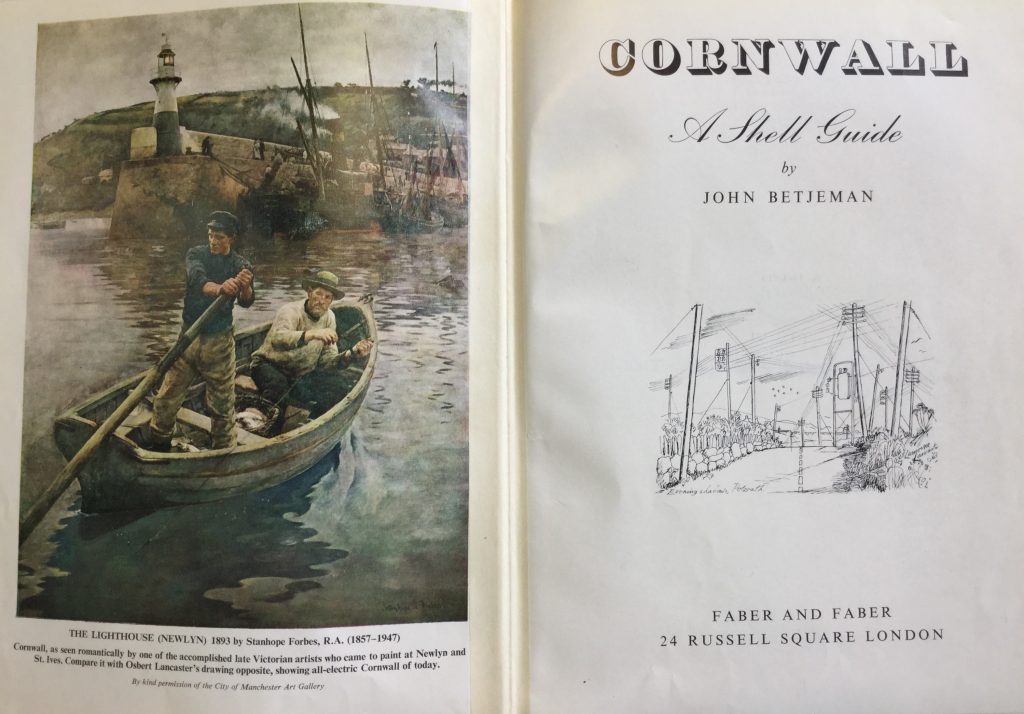The Shell Guides: a short history
Introduction
In 1933 John Betjeman, who was then working for Architectural Review magazine, came up with the idea for a series of county guides. He conceived the guides as an antidote to what he saw as the pomposity of travel guides which focused on the deeds and residences of royalty and of the nobility. He approached Jack Beddington, head of publicity at Shell, with his idea.
Jack Beddington had been given the job of publicity manger at Shell in 1928 after he complained about the poor standard of advertising. He had an innovative approach and commissioned artists and designers to produce advertising material. One innovation was to have posters fixed to the side of the fleets of Shell lorries, these were called lorrybills.
Beddington was a flambouyant, dapper and witty man but he could also be brusque and businesslike. He appreciated talent and was well known for kindness and encouragement of young artists and writers. The list of artists who worked for Shell included: Graham Sutherland, Ben Nicholson, and Rex Whistler.
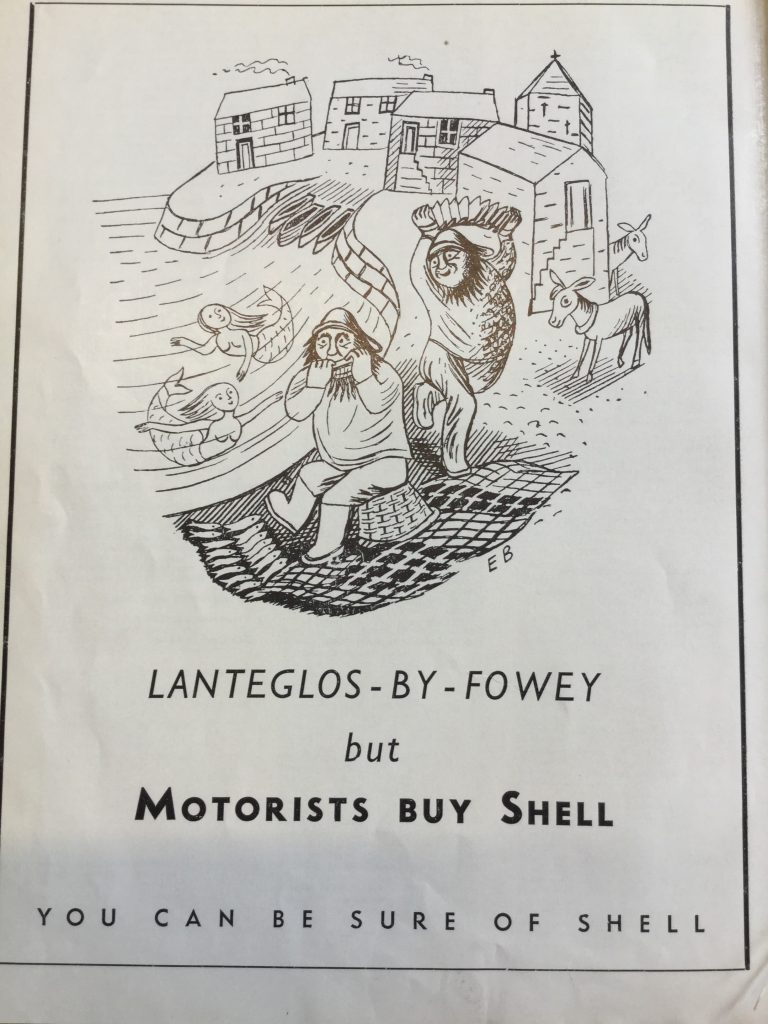
Beddington saw Betjeman guides as an ideal way of promoting the company. In the 1930s private car ownership was increasing among the affluent classes and the idea of touring as a leisure activity was gaining popularity. The market for petrol was also growing. Beddington commissioned Betjeman to produce a series of guides beginning with a guide to Cornwall– a county that Betjeman knew and loved.
Shell Guide to Cornwall
The first Shell Guide was called Cornwall Illustrated in a series of views of Castles, Seats of the Nobility, Mines, Picturesque Scenery, Towns, Public Buildings, Antiquities, etc. It was published by the Architectural Press in June 1934. The long-winded title was a humorous mocking of 19th century topographical guide books.
The book was spiral bound, something which has meant that few copies have survived. Photos and illustrations were an important part of the first guide and they continued to be in all future guides. Full size photos were printed on coloured paper, there were also photomontages of maps and photos, as well as illustrations.
The guide consisted of a preface, a gazetteer, and various features on sailing, hunting and fishing, and essays on Cornish birds and flowers, and farmhouse recipes. Betjeman wrote the preface and the gazetteer with other writers, including his father. Betjeman was not always wholly complimentary about his subjects this can be seen by his description of Newquay in the first guide:
‘The town is an interesting specimen of early 20th century seaside style. That is to say it consists of corrugated rows of villas, enormous hotels, flashing shops and pierrots, piers and concert halls.’
After the guide to Cornwall was published in 1934 other guides followed in quick succession with Kent, Wiltshire and Derbyshire appearing in 1935, followed by Devon, Dorset, Buckinghamshire and Somerset the year after.
Betjemin and John Piper
In 1937 Betjeman met John Piper and commissioned him to write the guide to Oxfordshire. They would later become joint editors of the series. Eventually Piper would become the sole editor.
Before The Second World War thirteen guides had been published, with Faber and Faber taking over as publishers from Batsford in 1939, who had themselves taken over from the Architectural Press. Faber just managed to publish the guide to Gloucestershire in June 1939 before the Second World War interrupted the steady stream of guides.
The guides in wartime
With the outbreak of the war Betjeman and Piper, who were jointly working on the guide to Shropshire, had to curtail their research. Piper became an official war artist and Betjeman worked for British intelligence. After the war Faber and Faber were reluctant to resume publishing the guides. Betjeman’s publishers, Murray, produced their own Architectural Guides to Berkshire (1948) and Buckinghamshire (1949), both edited by Piper and Betjeman, a volume on Lancashire also followed in 1955. These were superficially similar to the Shell Guides, with a gazetteer and numerous photographs, but they lacked the charm and pictorial stylishness of the Shell Guides ultimately leading to the series folding.
The post-war guides
Betjeman and Piper’s research on Shropshire came to fruition in 1951 when the Shell Guide to Shropshire was finally published. After this the guides began reappearing regularly again, with Piper becoming joint editor in 1960. New guides were published and some of the old pre-war guides were revised and updated, with one or two being published every year throughout the 1950s and 1960s.
Second guide to Cornwall
Thirty years after the first guide was published Betjeman rewrote the guide and the new edition of the Cornwall guides was published in 1964. Mistakes were corrected: St. Ives was included in the gazetteer (it had been left out before) and Betjeman’s views on Newquay* had softened and he was no longer dismissive about Truro Cathedral. The guide was like a homecoming love letter to Cornwall; Betjeman had recently bought a house in the county.
Betjeman’s departure
In 1967 Betjeman quarreled with the people at Shell over some rather derogatory remarks that were going to be included in the Northamptonshire guide. The remarks were removed and Betjeman resigned. All the guides published after 1968 have the following disclaimer on the copyright page:
Shell-Mex ad BP Limited is not responsible for any expressions of opinion by the author of this guide.
With John Piper as editor the guides continued to be produced throughout the 1970s and into the mid 1980s.
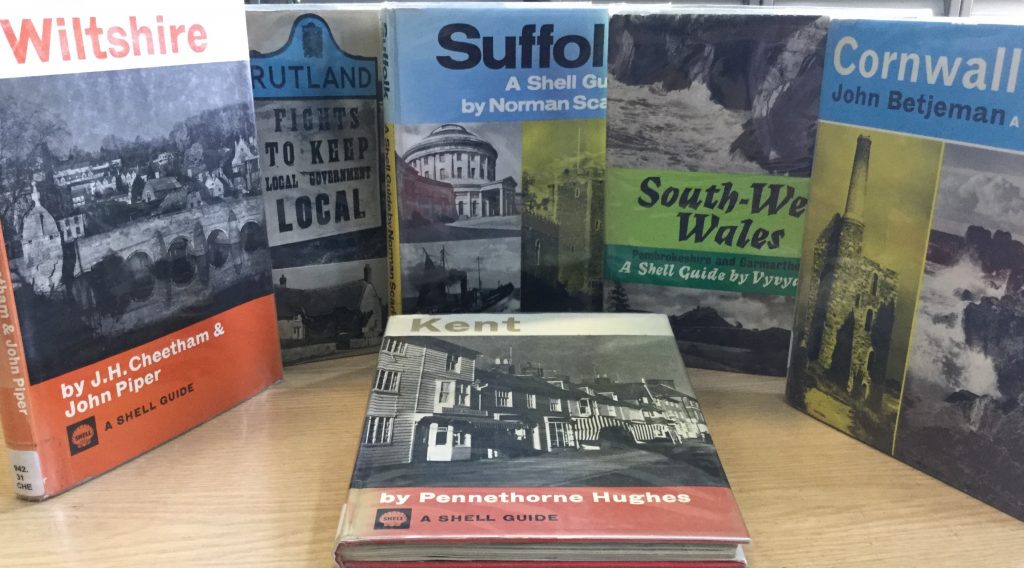
Authors of the guides
The early guides were often written by Betjeman’s friends, many of whom were from his student days at Oxford, and other acquaintances and colleagues. William Clonmore (Kent) and Wilhelmine ‘Billa’ Harrod (Norfolk) who was briefly engaged to Betjeman are to name a few. The writers were academics, clerics, artists, playwrights, photographers. They were chosen as they often had knowledge, affection and a life-long connections for particular counties. This element shines through the text of the guides, most notably in Norman Scarfe’s Suffolk.
The writers of the guides were encouraged to express their prejudices and passions in their writing. This approach is explained in Betjeman’s letter to Juliet Smith:
‘The value of the Shell Guides is to tell people what places are really like… a record of what England is now and a candid personal opinion of each parish and town. It’s no good writing a comprehensive and impersonal catalogue. That is already being done in Pevsner’s Buildings of England. Don’t bother too much about dates and styles … Pick out [the buildings] you like … and don’t be too frightened of saying that a place is hideous if you don’t like it.’
The guides could be gently witty too, as in this gazetteer entry for Norton Disney in the Lincolnshire guide:
‘Lost in a wilderness of the Brant, and surrounded by woods, this romantic village was once dominated by the castle of the Disney family, whose name lives on in the creator of Mickey Mouse, a descendant of a junior branch.’
The format of the guides
The format of the first guide, with its gazetteer, maps, and essays, set the pattern for all the subsequent titles. The use of photographs and images, which were an important component of the first guide, were to be a crucial part of the style and look of the guides. A number of the writers were also artists, painters and photographers, such as John and Paul Nash, and Roger Mayne, and John Piper who was an editor, was also a artist, this meant that the quality of photographs and images used within the guides were of the highest quality.
The early pre-war titles used coloured paper for the full-size photographs. This was something which set them apart from other guides of the time. Some photographs were a full page and others were juxtaposed with contrasting or similar images. Photos included conventional shots of buildings and also architectural details.
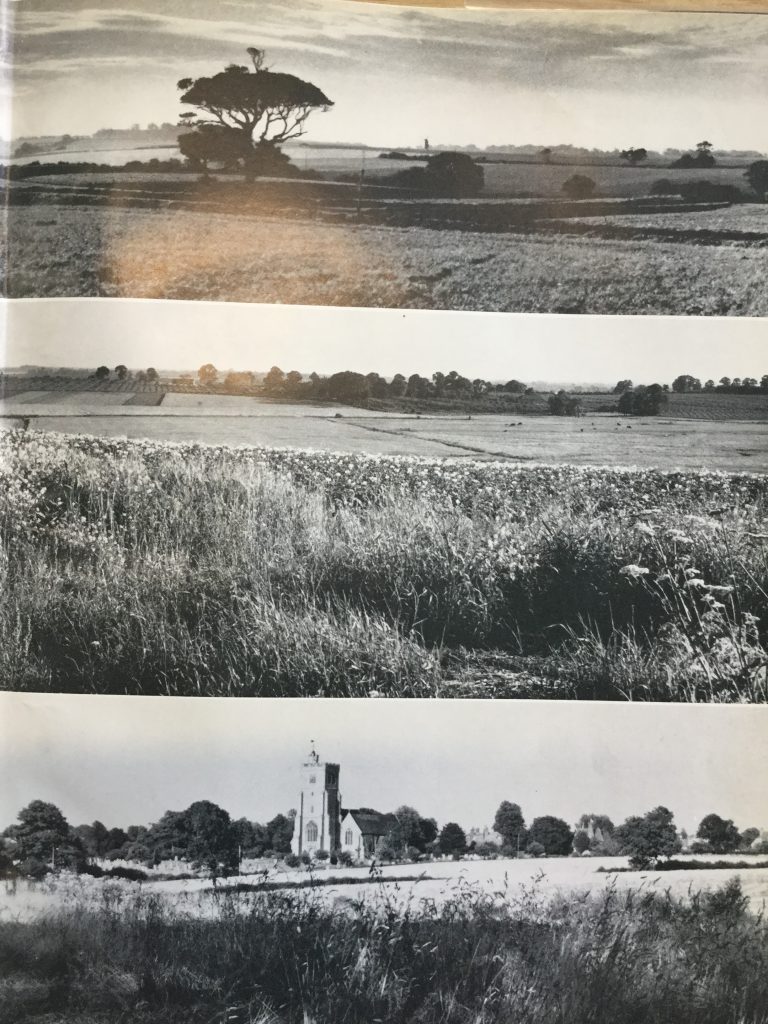
Generally all the photographs were black and white, with the exception being photos used for the frontispiece. There were also drawings, paintings, montages, engravings and maps. Covers on the post-war guides were black and white photographs, sometimes overlaid with one or two colours. In the 1970s the guides began to have full colour photographs on the covers. The endpapers were complimentary to the guides and such as the one for the Cornwall guide which were photos of pebbles on a beach.
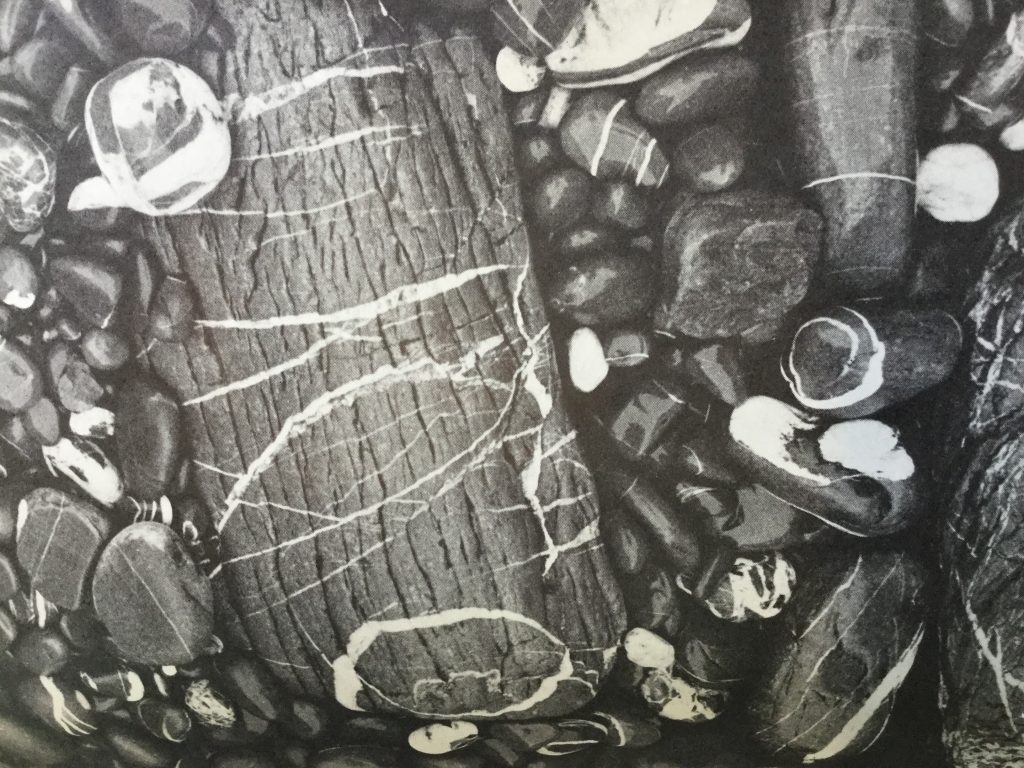
In our Libraries
The Information and Reference Library has a small collection of Shell Guides. To view these on your next visit please ask a member of staff and they will be able to assist you. There is also a comprehensive collection of current travel guides covering countries from Albania to Zimbabwe that can be found throughout our libraries.
*Betjeman comment on Newquay in the second edition of the Shell Guide to Cornwall:
…what all the coast of Cornwall would have been like if the speculative builders had had their way. It is unashamedly a holiday town, mostly boarding houses and big hotels and shops and is a fascinating study of social history of England in the last century and a half.’
Library members can use their library card to log in to the links to biographical entries in the Oxford Dictionary of National Biography.

